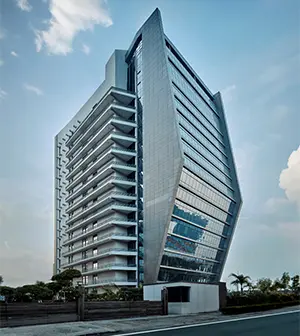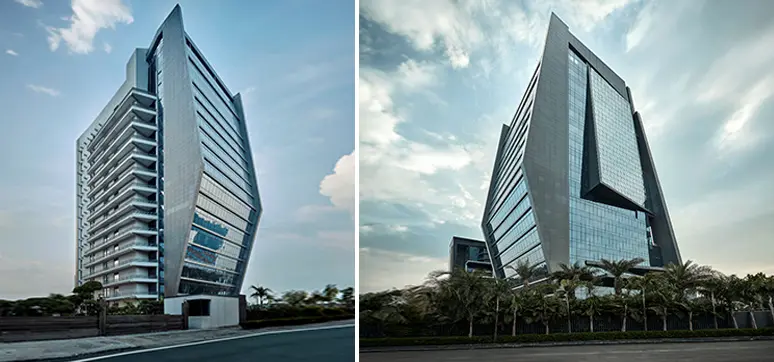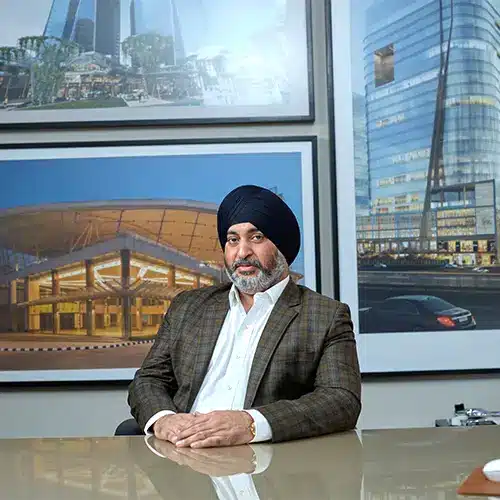In the ever-evolving realm of architecture and design, the resounding call for sustainability reverberates louder than ever before. As we endeavour to fashion spaces that seamlessly blend with the environment, the emphasis on sustainable designs for Façades and fenestration takes centre stage. This extensive exploration delves into the intricate relationship between sustainable design, ventilation, and the pivotal roles that Façades and fenestration play in achieving both aesthetic appeal and environmental responsibility.
Design, at its core, is a delicate dance between form and function. Façades and fenestration, as the external elements of a structure, serve as the face of a building. Beyond their visual impact, they wield a critical influence on a building’s energy efficiency and indoor air quality.
In the current architectural landscape, sustainable design has transitioned from a niche concept to an imperative. With the world grappling with climate change and escalating environmental concerns, architects and designers bear the responsibility of creating structures that leave a minimal ecological footprint. Façades and fenestration, being the interface between the interior and the exterior, present a unique opportunity to seamlessly integrate sustainability into architectural endeavours.
 When we embark on discussions about sustainable designs, ventilation invariably emerges as a key player. Adequate ventilation not only enhances indoor air quality but also contributes significantly to energy efficiency. Unlike traditional designs that often sacrifice ventilation for insulation or aesthetics, modern sustainable designs seek a harmonious balance. They ensure that structures breathe, fostering a dynamic interplay between the indoors and outdoors while maintaining thermal comfort.
When we embark on discussions about sustainable designs, ventilation invariably emerges as a key player. Adequate ventilation not only enhances indoor air quality but also contributes significantly to energy efficiency. Unlike traditional designs that often sacrifice ventilation for insulation or aesthetics, modern sustainable designs seek a harmonious balance. They ensure that structures breathe, fostering a dynamic interplay between the indoors and outdoors while maintaining thermal comfort.
Fenestration, encompassing windows, doors, and skylights, becomes instrumental in achieving effective natural ventilation. The strategic placement & design of these elements can facilitate the inflow of fresh air and the expulsion of stale air. This not only reduces dependence on mechanical ventilation systems but also harnesses the power of nature to create a healthier indoor environment.
Sustainable facade design extends beyond the use of energy-efficient materials. It embraces a holistic approach that considers insulation, solar shading, and integration of greenery. Green Façades, adorned with climbing plants or vegetation, act as natural insulators, reducing the energy required for heating and cooling. Additionally, incorporating recycled or locally sourced materials minimises the environmental impact associated with production and transportation.
The emergence of dynamic Façades marks a shift in sustainable design thinking. These Façades respond to environmental conditions, adjusting to optimise natural light, shade, and ventilation. Automated systems or responsive building materials enable dynamic Façades to adapt to changing weather patterns, ensuring energy efficiency without compromising on comfort.
While the benefits of sustainable designs are undeniable, challenges persist, especially concerning the delicate balance between aesthetics and functionality. Nevertheless, innovative solutions are surfacing. Advances in materials science and technology enable the creation of visually stunning Façades that meet stringent sustainability criteria. Transparent solar panels, seamlessly integrated into windows, convert sunlight into electricity without obstructing views.
As the design landscape continues to evolve, new trends are shaping the future of sustainable Façades and fenestration. The integration of smart technologies, such as sensors and adaptive controls, enables buildings to respond dynamically to user behaviour and environmental conditions. Additionally, biomimicry—drawing inspiration from nature’s efficient designs—offers innovative solutions for sustainable architecture.
In the pursuit of sustainable designs for Façades and fenestration, ventilation emerges as a key element. The symbiotic relationship between these elements not only defines the environmental impact of a structure but also influences the well-being of its occupants. As architects and designers embrace the challenge of creating spaces that breathe with the environment, we move one step closer to a future where sustainability and design seamlessly coexist. This fosters spaces that are not only visually stunning but also conscientiously crafted for the well-being of our planet and its inhabitants.














